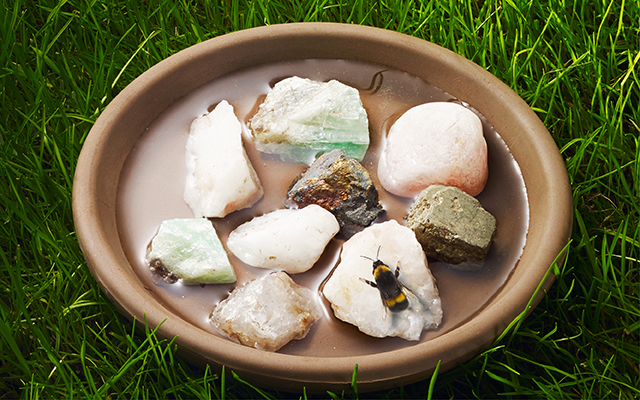The Most Efficient Pollinator
An accumulation of habitat loss, reduced resistance to disease, and pesticide toxicity has made bee colonies less and less sustainable every year. Since bees are lacking a crucial food source, the solution to the bee problem is not more beekeepers.
The best way anyone can help bees and other pollinators is to create a garden of native flowers rich in nectar for them to thrive in.
What can we do for bees?
1) Make a Bee Bath:

2) Build/ buy a Bee House:
There are over 20,000 species of bees on earth. Unlike honeybees, most bee species are solitary, meaning they don't live together in hives. Instead, native solitary bees like mason bees and leafcutter bees nest in holes found in nature. They are tame, docile, and the best pollinators for your garden.
You can attract native solitary bees by setting out a bee box for them to live in. If you're looking for an even simpler approach, drilling different sized holes a block of wood will work too. Just make sure it's closed on one end and there's a little rain protection.
3) Support Local Bee Businesses:
Another great way to promote bee populations is to buy products from local beekeeping businesses.
 | ||||
| www.honeyhouseab.com |
91 S Milwaukee Avenue, Vernon Hills, Illinois 60061, United States
Along with being a natural sweetener, honey is an anti-inflammatory, antioxidant and antibacterial agent.
Here are some easy recipes using honey:



Comments
Post a Comment